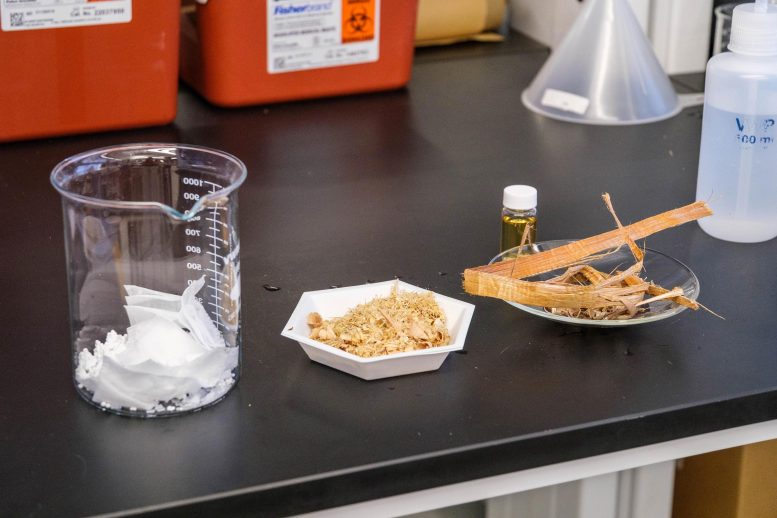
Different types of wood waste can be used to create the water filter. Credit: UBC Forestry/Jillian van der Geest
UBC’s BioProducts Institute develops a plant-based filter, “bioCap,” that can capture nearly 99.9% of microplastic particles in water, offering a scalable and sustainable solution to microplastic pollution.
Could plants offer a solution to the looming threat of microplastic pollution? Scientists at UBC’s BioProducts Institute found that if you add tannins—natural plant compounds that make your mouth pucker if you bite into an unripe fruit—to a layer of wood dust, you can create a filter that traps virtually all microplastic particles present in water.
Although the technology is still in its experimental phase, the researchers believe it can be scaled up affordably and efficiently, given the right industrial collaborator.
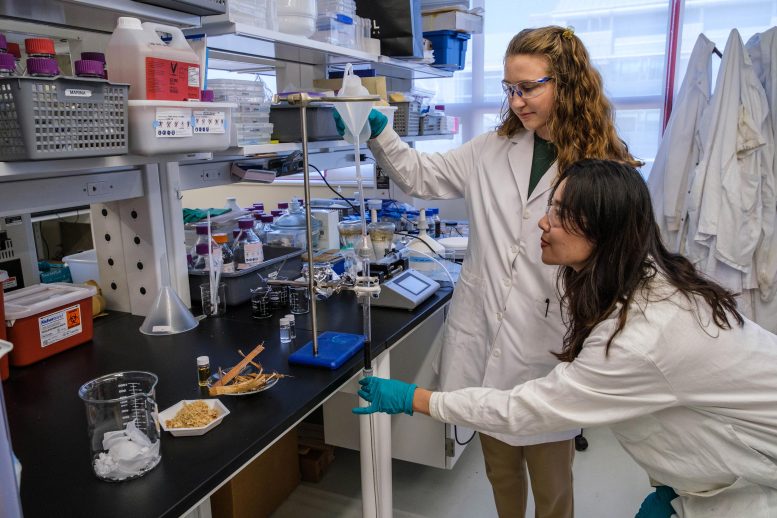
UBC researchers Dr. Tianyu Guo (front) and Marina Mehling. Credit: UBC Forestry/Jillian van der Geest
The Challenge of Microplastics
Microplastics are minuscule fragments of plastic that originate from the deterioration of consumer goods and industrial waste. Keeping them out of water supplies is a huge challenge, says Dr. Orlando Rojas, the institute’s scientific director and the Canada Excellence Research Chair in Forest Bioproducts.
He noted one study which found that virtually all tap water is contaminated by microplastics, and other research which states that more than 10 billion tons of mismanaged plastic waste will be dispersed in the environment by 2025.
“Most solutions proposed so far are costly or difficult to scale up. We’re proposing a solution that could potentially be scaled down for home use or scaled up for municipal treatment systems. Our filter, unlike plastic filters, does not contribute to further pollution as it uses renewable and biodegradable materials: tannic acids from plants, bark, wood and leaves, and wood sawdust—a forestry byproduct that is both widely available and renewable.”
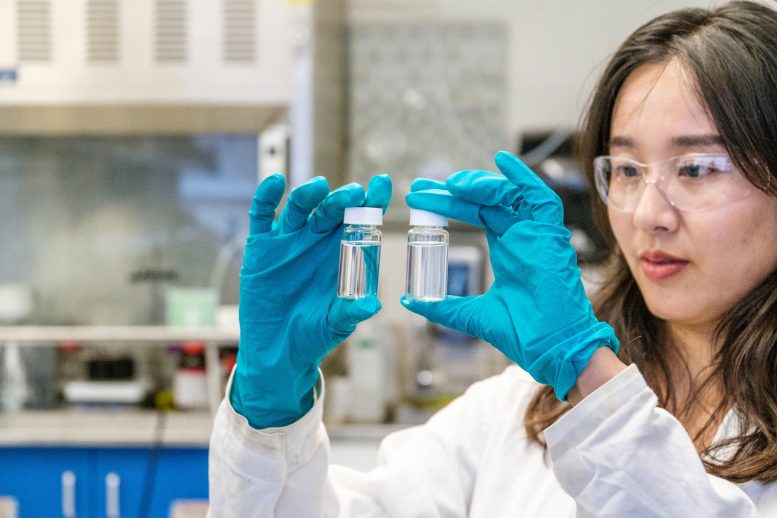
UBC postdoctoral researcher Dr. TianyuGuo is holding two water samples showing treated (left) versus untreated water(right). She is part of a team that developed a wood dust-based filter for removing microplastics from water. Credit: UBC Forestry/Jillian van der Geest
Effectiveness Across Plastic Types
In their research, the team analyzed microparticles shed from widely-used tea bags made of polypropylene. They observed that their technique, termed “bioCap,” captured between 95.2 percent and a staggering 99.9 percent of plastic particles in water, depending on the plastic type. When tested in mouse models, the process was proven to prevent the accumulation of microplastics in the organs.
Dr. Rojas, a professor in the departments of wood science, chemical and biological engineering, and chemistry at UBC, emphasizes that it’s difficult to capture all the different kinds of microplastics in a solution, as they come in different sizes, shapes, and electrical charges.
“There are microfibres from clothing, microbeads from cleansers and soaps, and foams and pellets from utensils, containers, and packaging. By taking advantage of the different molecular interactions around tannic acids, our bioCap solution was able to remove virtually all of these different microplastic types.”
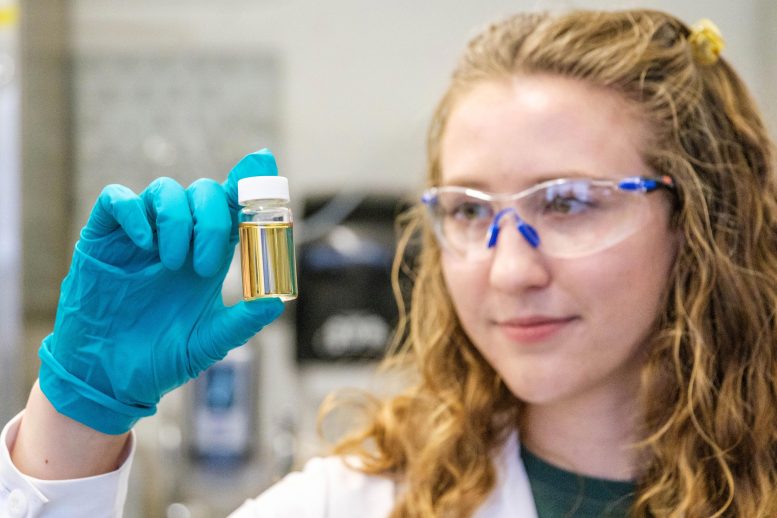
UBC PhD student Marina Mehling is holding a container of tannin solution, which is used to coat the wood dust filter. Credit: UBC Forestry/Jillian van der Geest
Interdisciplinary Collaboration Towards Sustainability
The UBC method was developed in collaboration with Dr. Junling Guo, a professor at the Center of Biomass Materials and Nanointerfaces at Sichuan University in China. Marina Mehling, a PhD student at UBC’s department of chemical and biological engineering, and Dr. Tianyu Guo, a postdoctoral researcher at the BioProducts Institute, also contributed to the work.
“Microplastics pose a growing threat to aquatic ecosystems and human health, demanding innovative solutions. We’re thrilled that the BioProducts Institute’s multidisciplinary collaboration has brought us closer to a sustainable approach to combat the challenges posed by these plastic particles,” said Dr. Rojas.
Reference: “Flowthrough Capture of Microplastics through Polyphenol-Mediated Interfacial Interactions on Wood Sawdust” by Yu Wang, Mengyue Wang, Qin Wang, Taoyang Wang, Zhengming Zhou, Marina Mehling, Tianyu Guo, Hang Zou, Xiao Xiao, Yunxiang He, Xiaoling Wang, Orlando J. Rojas, Junling Guo, 6 June 2023, Advanced Materials.
DOI: 10.1002/adma.202301531

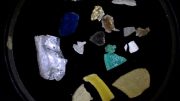
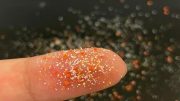

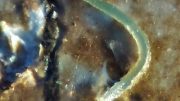
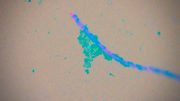
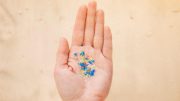
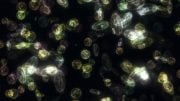

“the looming threat of microplastic pollution?” I think we are beyond the “looming threat” stage.
Just wait until you learn how many micro plastic particles were introduced into lungs by wearing those mandated masks. Death is just around the corner.
“Micro plastics” solutions seems like the best way to get funded these days, regardless of any defined threat.
Would love to see a real health effect comparison of exposure to nano and micro scale PETE or PP particles versus the nano and micro scale naturally derived that humans have been breathing and ingesting for millennia. A little dust or smoke in the air? Guess what that is. Those dust bunnies under the chair, the dust on the furniture? Guess what that is. When do we get to see a real comparison of nano and micro scale chitin from the dust mites that live among us, or the clay kicked up when we walk on the trail relative to the super scary micro plastics?